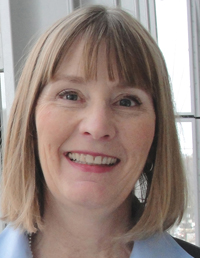
All of you who’ve weeded a collection know the challenges I face. Former American Libraries Editor Leonard Kniffel left me a legacy: file drawers stuffed with materials from his 15 years at the helm of this magazine. As someone new to the American Library Association and to this publication, it’s been somewhat daunting to determine what should stay and what should go. Is it a trifle or a treasure? The project is a deep dive into the history and workings of the ALA, some going back prior to Leonard’s arrival.
Fortunately I have plenty of resources to assist me in assessing documents, including the advice of my new colleagues at ALA, especially at American Libraries, and an ALA Retention Policy.
The folders sometimes detour into the evolution of technologies. A thick American Libraries deadlines file spans handwritten calendars and dot-matrix printouts from the 1980s, typeset calendars from the 1990s, and self-published and color-copier versions. (In the interest of being eco-friendly, we now keep track of deadlines in a network drive.)
Other files overflow with fading faxes and yellowed newspaper clippings—remember Stephen Carrie Blumberg, caught in 1990 with more than 11,000 rare books and manuscripts stolen from libraries? Yes, I have a file on him. Then there are microfiche samples from vendors and a typewritten interview with Booklist Editor Bill Ott on the occasion of Booklist’s 90th anniversary in 1995. Haven’t found any floppy disks or eight-millimeter movies yet, but it wouldn’t surprise me.
What’s remarkable is that these old files speak to professional issues that are still relevant content today. The cover story of AL’s January/February 2012 issue, about interns adding diversity to the library work force, advances a long tradition within the library community of striving for diversity in front of and behind the desk. The diversity folder from the AL cabinet covers a 1991 ALA retreat, and AL colleagues tell me that civil rights struggles began to affect ALA policy in 1938, when the Association took a stand against segregated meeting rooms. In 1970, ALA’s Feminist Task Force was created, and that same year ALA made history by becoming the first-ever professional association to form an LGBT group.
I hope to complete my file deep dive by the time you read this, but my quest for leads on professional trends relevant to you has just begun. I’m plowing through reader surveys, reviewing Google Analytics, and checking blog comments. Have a burning issue you want us to cover? Email me, or say hello at the ALA Midwinter Meeting.
And if you need a 1989 typesetting user’s guide or a flier on how to repair your 1981 Osborne computer, I’ve got the file!


